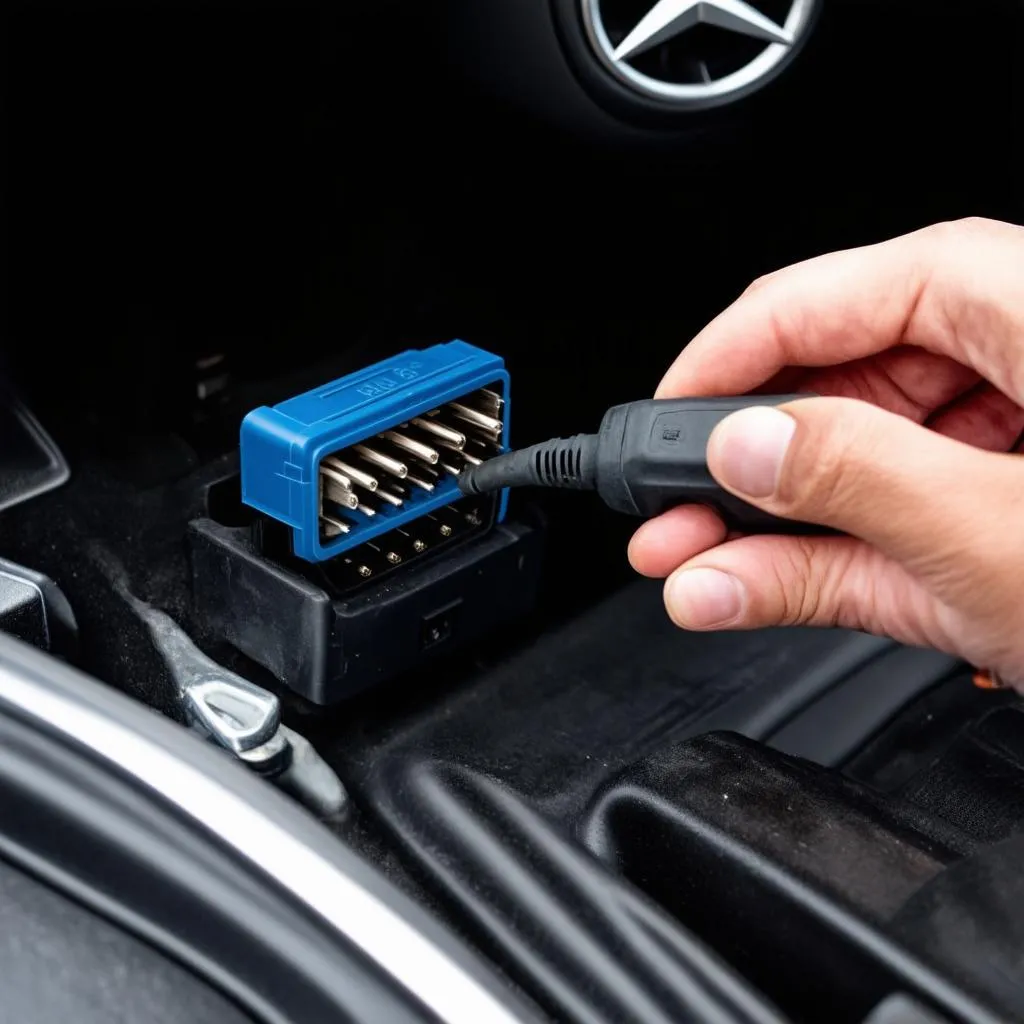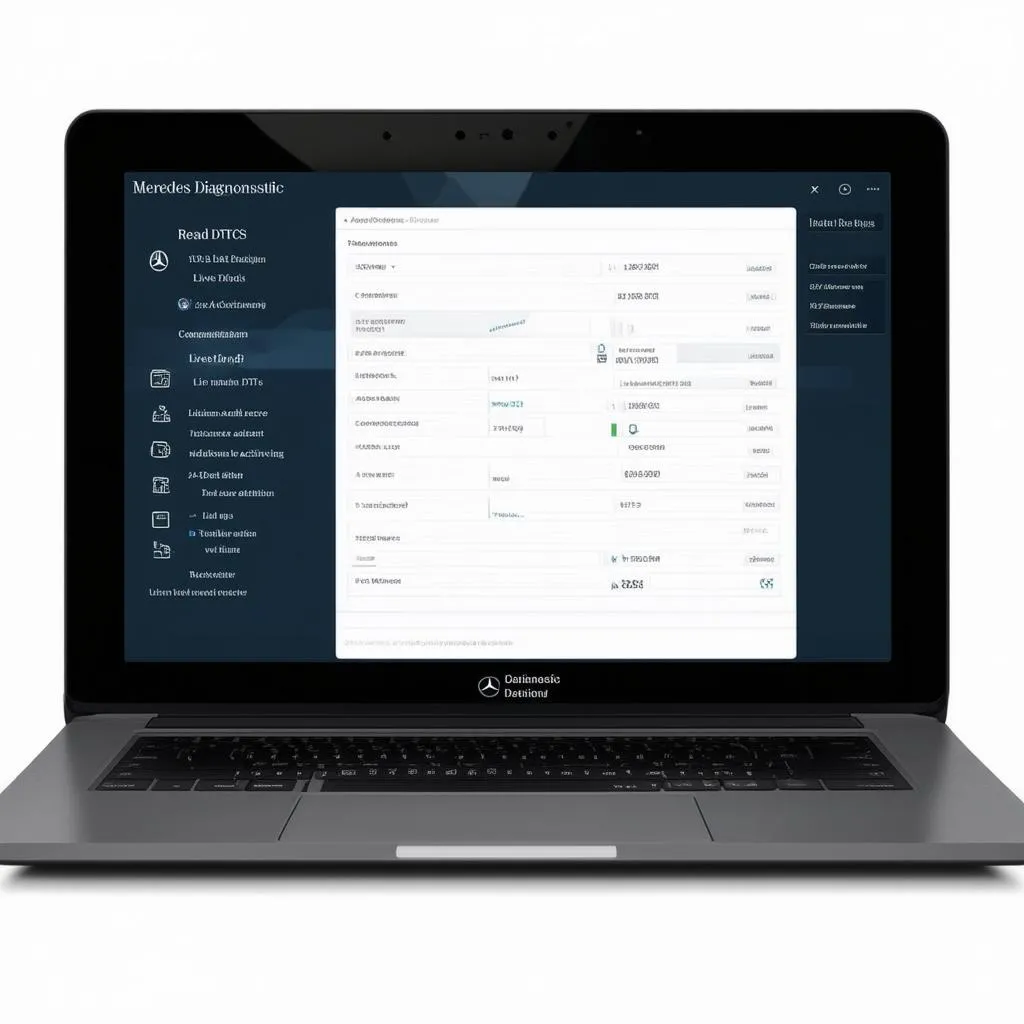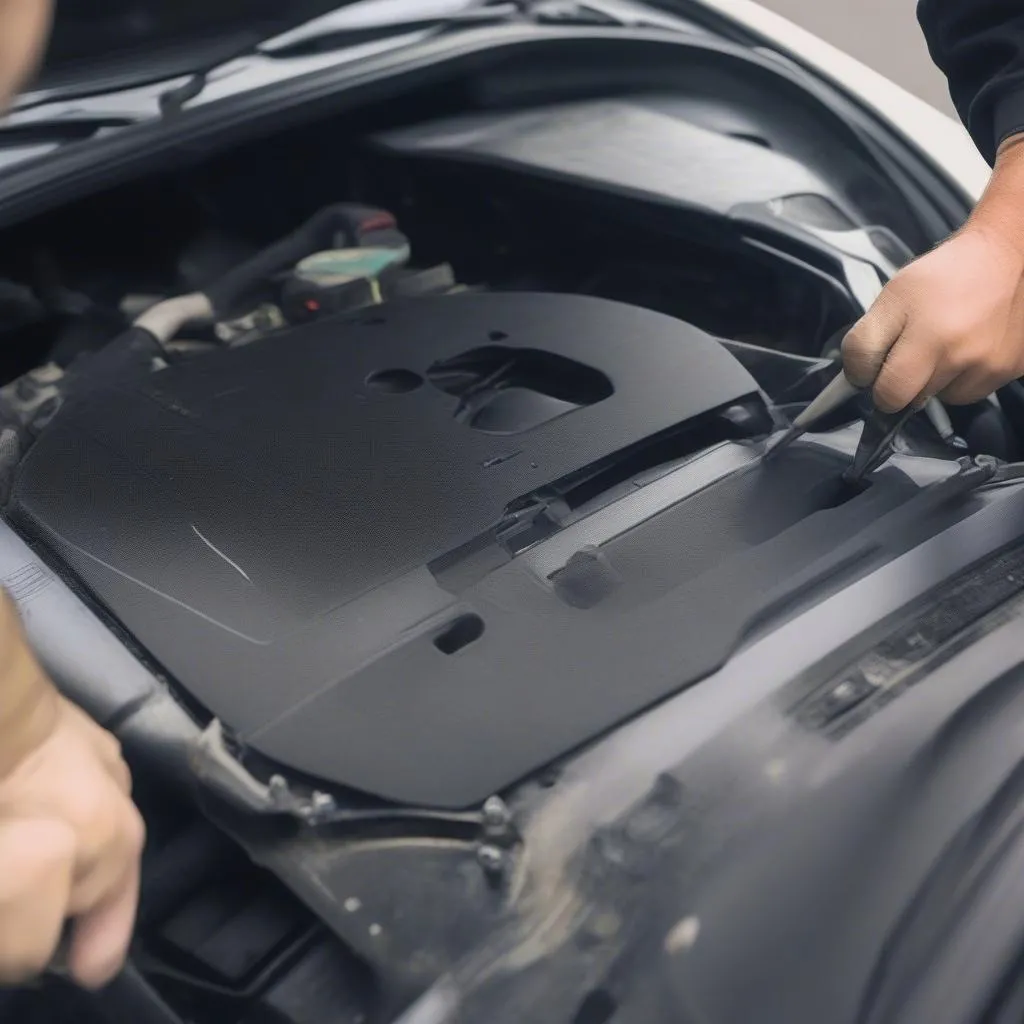The Mercedes diagnostic port, often referred to as the OBD-II port, is a crucial interface for understanding your car’s health. It’s a standardized 16-pin connector found in most Mercedes models from 1996 onwards. This port allows mechanics and car owners to tap into the car’s onboard computer system, retrieve diagnostic trouble codes (DTCs), and access a wealth of data about the engine, transmission, emissions, and other crucial systems.
Understanding the Importance of the Mercedes Diagnostic Port
“The diagnostic port is like a window into the soul of your Mercedes,” says automotive electronics expert, Dr. Emily Carter, author of “Modern Automotive Diagnostics.” “By connecting to this port, you can access a treasure trove of information that can help you diagnose and fix problems, often before they become major headaches.”
Here’s why the Mercedes diagnostic port is so important:
- Early Problem Detection: The port allows you to catch potential issues early on. When your Mercedes encounters a problem, it often stores a DTC in its memory. Reading these codes can give you a head start on diagnosing and addressing the issue.
- Simplified Diagnostics: Imagine the days when mechanics had to rely solely on their intuition and experience to diagnose car problems. The diagnostic port has revolutionized the process, offering concrete data points and insights that streamline troubleshooting.
- Performance Monitoring: Beyond just troubleshooting, the port lets you monitor various parameters like engine performance, fuel efficiency, and emission levels. This data can be invaluable for optimizing your car’s performance and ensuring it runs at its best.
Locating Your Mercedes Diagnostic Port
The Mercedes diagnostic port is typically located under the dashboard, on the driver’s side. It’s usually a black or white rectangular connector with a 16-pin configuration. However, the exact location may vary depending on the model year and model of your Mercedes.
Pro Tip: If you’re having trouble locating the port, consult your owner’s manual or search online for specific instructions for your Mercedes model.
 mercedes obd2 port
mercedes obd2 port
Common Uses of the Mercedes Diagnostic Port
The Mercedes diagnostic port can be used for a wide range of purposes, including:
- Reading and Clearing DTCs: This is the most common use of the port. By connecting a diagnostic scanner, you can retrieve and clear any stored DTCs, helping you understand why your check engine light is on or pinpoint other issues.
- Live Data Monitoring: You can observe real-time data from various sensors and systems in your car, such as engine RPM, coolant temperature, oxygen sensor readings, and more. This is particularly helpful for diagnosing intermittent problems or monitoring specific performance parameters.
- Component Activation: Some diagnostic scanners allow you to activate specific components like the fuel pump, injectors, or even the windows and sunroof, for testing purposes.
- Software Updates and Coding: In some cases, the diagnostic port can be used to update the software of your car’s control units or to code new features.
Choosing the Right Diagnostic Tool
There are numerous diagnostic tools available on the market, ranging from basic code readers to advanced professional-grade scanners. The right tool for you depends on your needs and technical expertise.
- Basic Code Readers: These are inexpensive and easy-to-use devices that can read and clear basic DTCs. They’re ideal for car owners who want to do some basic troubleshooting themselves.
- Advanced Scanners: These tools offer more features, including live data monitoring, component activation, and even coding capabilities. They’re more expensive but provide a comprehensive diagnostic solution, often preferred by professional mechanics.
Cardiagtech Recommendation: For reliable and feature-rich diagnostic tools, check out the range of products offered by Cardiagtech. They provide a variety of options suitable for both DIY enthusiasts and professionals. [Link to relevant Cardiagtech product page]
FAQs About the Mercedes Diagnostic Port
Q: Can I damage my car by using the diagnostic port?
A: Using the diagnostic port itself is generally safe. However, it’s crucial to use a compatible and reliable diagnostic tool and avoid tampering with settings or functions you don’t understand.
Q: What should I do if my check engine light is on?
A: A check engine light indicates that your car’s onboard computer has detected a potential problem. The first step is to retrieve the DTCs using a diagnostic scanner. These codes will provide clues about the nature of the problem, helping you determine the next course of action.
Q: Can I use any OBD-II scanner on my Mercedes?
A: While most Mercedes vehicles use the standard OBD-II protocol, it’s always recommended to check your owner’s manual or consult with a trusted mechanic to ensure compatibility.
 diagnostic software for mercedes
diagnostic software for mercedes
Conclusion
The Mercedes diagnostic port is a powerful tool that provides access to a wealth of information about your car’s health and performance. Understanding its functions and utilizing the right diagnostic tools can empower you to maintain your Mercedes, diagnose issues effectively, and enjoy a smoother driving experience.
Need further assistance with your Mercedes diagnostics? Contact CARDIAGTECH for expert advice and support. [Link to CARDIAGTECH contact page]


